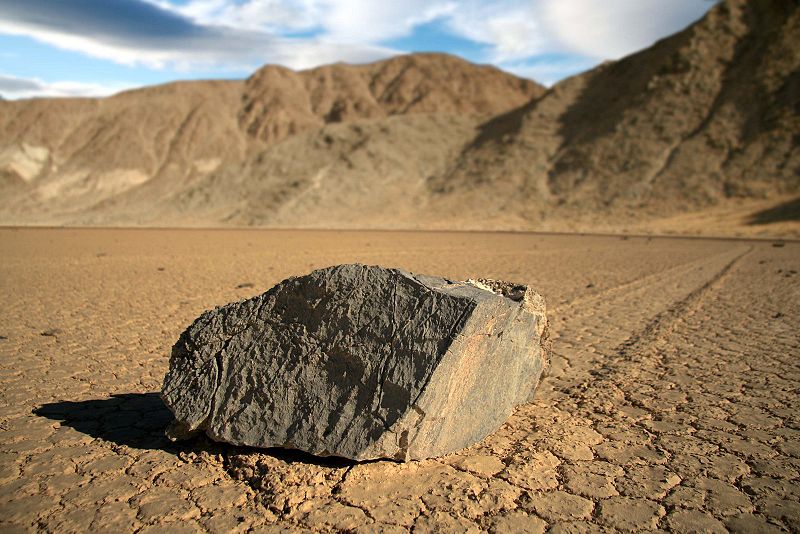The Planet Earth is full of mysteries for the scientists of all specializations. The mysteries of nature seem to be never ending. One of those that has been giving researchers a check for more than six decades is the “Sailing Stones of Death Valley”. It is a stunning geographical phenomenon where Stones weighing hundreds of pounds move in long tracks along a plain smooth valley without any human or animal intervention. This is observed around the dried lake Playa in Death Valley and also known a Racetrack. These valleys are filled with dry cracking muddy ground during summer and ice during winter.
Racetrack stones only move every two or three years and most tracks develop over three or four years. With time tracks of each stone varies from the other. Some stones which start next to each other start out traveling parallel, but one may abruptly change direction to the left, right, or even back the direction it came from. Length also varies because two similarly sized and shaped rocks could travel uniformly, then one could burst ahead or stop dead in its track. Some stones make linear turns others make oval turns while others create a wavy shape on their tracks. No one has ever seen them move and nobody knows the speed they move with.
There are many hypothesis proposed for this Sailing Stone phenomenon. In 1955 George M. Stanley first proposed the theory that the rocks move with the assistance of ice sheets forming after the Playa surface is flooded. Bob Sharp and Dwight Carey started a Racetrack stone movement monitoring program in May 1972. In 1976, they proposed the ice-sheet theory. They analyzed the tracks and concluded because of track characteristics and the geometries of the tracks relative to each other that ice sheets could not have been involved in forming the tracks and moving the rocks. They stated, “It is concluded that wind moves the stones when conditions are just right, that this normally happens at least every one to three years on Racetrack Playa, and that ice sheets are not necessary.” In 1995, John B. Reid, Jr. and other geologists from Hampshire College disagreed with Sharp and Carey’s conclusion. Using data from seven Death Valley visits in the late 1980s through 1994, they support Stanley’s original ice sheet hypothesis. This is however not entirely true because the stones move during the summer when the temperature is too high and even dries the stones themselves.The mysterious sailing stones of Death Valley not only slide on smooth ground but dig and leave shallow track in their wake.
We hope future advanced technology will shed more light no the mystery of the sailing stones at the Racetrack Playa of Death Valley, however no matter how much is determined about the sailing rocks, their beauty and magic will stand as unique creation of Nature.



Recent Comments